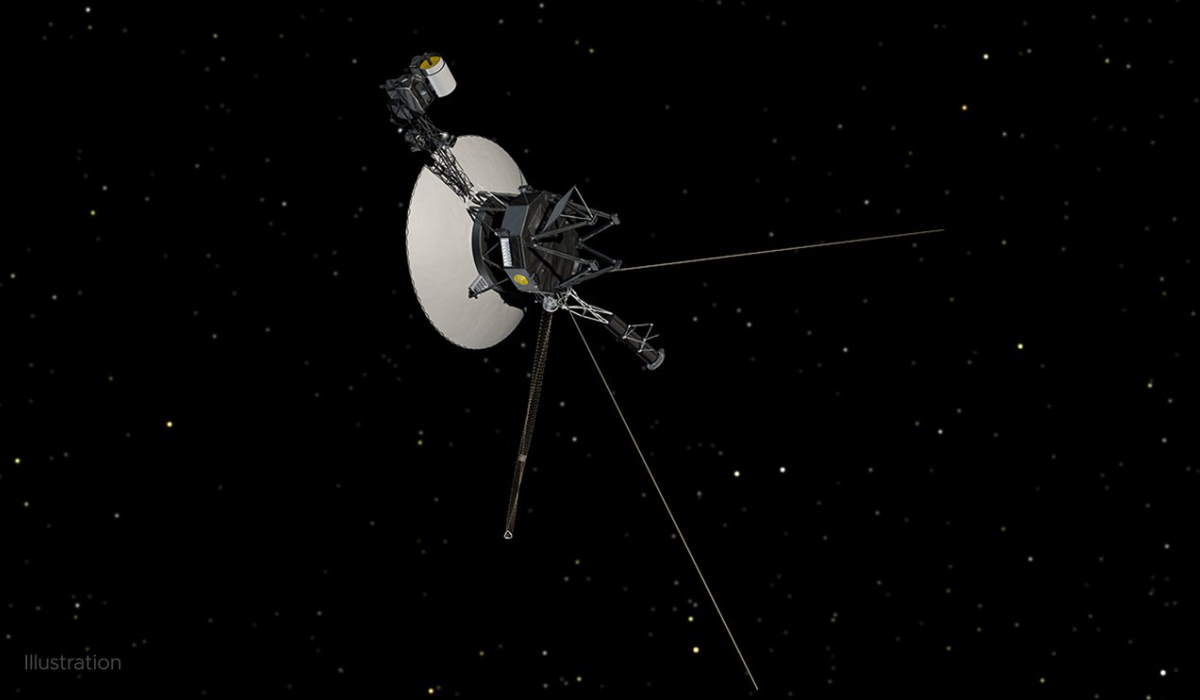NASA’s Voyager 1 probe, a pivotal instrument in studying the outer Solar System, is currently facing communication difficulties. Launched in 1977, its main purpose has been to gather and send back information about the transition zone between the heliosphere (the Sun’s protective bubble, encompassing the Solar System, shielding it from interstellar radiation and cosmic rays) and the interstellar medium. This mission has been crucial in enhancing our understanding of the Solar System’s edge and its interaction with the vast interstellar space.
Recent reports from NASA reveal that Voyager 1’s Flight Data System (FDS) is malfunctioning, leading to a failure in transmitting coherent data to Earth. Typically, the probe sends scientific and engineering data encoded in binary, but now it’s emitting unintelligible patterns.
The Earth-based Voyager team has pinpointed the faulty instrument but faces a significant challenge in fixing it from billions of miles away. Efforts to reboot the FDS to its normal state have been unsuccessful, leaving the spacecraft still unable to send useful data. Resolving this issue is complicated by the necessity to consult outdated documents created by engineers decades ago, who could not have predicted current problems.
This situation highlights the extraordinary endurance and resilience of the Voyager probes. Built and launched over 40 years ago, they have surpassed their expected lifespan and travel distance. Voyager 1’s continued operation, despite difficulties, is a testament to the original team’s vision and engineering skills.
The issues with Voyager 1 also underscore the complexities of deep space exploration. As spacecraft travel farther from Earth, they face unpredictable conditions and challenges, compounded by significant communication delays due to the vast distances. Remote troubleshooting becomes an intricate and prolonged task.

In 2022, NASA’s Voyager 1 encountered a perplexing issue when it began generating telemetry data that appeared random and nonsensical. This problem posed a significant challenge, as the spacecraft, millions of miles away from Earth, sent back data that didn’t reflect its actual operations or condition. NASA engineers were tasked with diagnosing and resolving this issue from a vast distance, requiring a deep understanding of the spacecraft’s intricate systems and a creative approach to problem-solving.
Remarkably, the team managed to successfully address the problem, restoring normal operations to Voyager 1. This achievement not only highlighted the ingenuity and skill of NASA’s engineers but also underscored the enduring resilience and capability of Voyager 1, even after decades of space travel.
Nevertheless, the Voyager mission remains a beacon of inspiration and scientific knowledge. As one of the furthest human-made objects, Voyager 1 has fundamentally changed our perception of the Solar System and its position in the larger universe. Its journey into uncharted territory has laid the groundwork for future space missions and broadened our quest to explore and comprehend the cosmos.
As NASA engineers strive to solve the issues with Voyager 1, the global scientific community and space enthusiasts eagerly await. The challenges encountered by Voyager 1 are not merely technical obstacles; they are part of the broader narrative of human exploration and our unceasing quest for knowledge beyond Earth.
Voyager 1
Launched on September 5, 1977, Voyager 1’s primary mission was part of NASA’s Voyager program to study the outer Solar System and beyond. Initially, its goal was to explore Jupiter and Saturn, providing unprecedented insights into these giant planets, their moons, and their rings. Voyager 1’s flybys of Jupiter in 1979 and Saturn in 1980 yielded a wealth of scientific data, including detailed images and information about their atmospheres, magnetospheres, and moons. Its discovery of active volcanoes on Jupiter’s moon Io and intricacies in Saturn’s rings were particularly groundbreaking, reshaping our understanding of the outer Solar System.
After completing its initial objectives, Voyager 1’s mission extended to explore the farthest reaches of the Solar System and the interstellar space beyond. It became the first spacecraft to provide direct data on the outer heliosphere, the boundary where the Sun’s influence wanes. On August 25, 2012, Voyager 1 entered interstellar space, making it the first human-made object to do so. In this phase of its journey, the spacecraft studies the nature of the transition zone between the heliosphere and the interstellar medium, gathering invaluable information about cosmic rays and interstellar particles.
Despite its age and distance from Earth, Voyager 1 continued to send back data until the recent issue, thanks to its durable construction and the ingenuity of NASA’s engineers. The spacecraft’s longevity has far exceeded its initial 5-year mission timeline, operating for over four decades. It remains a testament to human ingenuity and the quest for knowledge, providing insights not just about our planetary neighbors, but also about the nature of space itself. As Voyager 1 ventures further into the unknown, it carries with it the Golden Record, a message to any potential extraterrestrial life, symbolizing the human desire to explore, understand, and connect with the cosmos.
Sources
- “Engineers Working to Resolve Issue With Voyager 1 Computer” on the NASA website
- Voyager 1 on Wikipedia
- Space Shuttle Endeavour’s Touchdown Meets Columbia’s Salute [An amazing photo from the past] - February 29, 2024
- Moon Landings: All-Time List [1966-2024] - February 23, 2024
- From Orbit to Ordinary: 10 Earthly Applications of Space Technology - January 23, 2024
